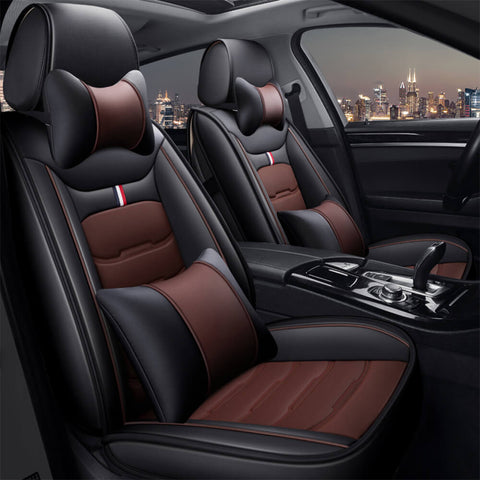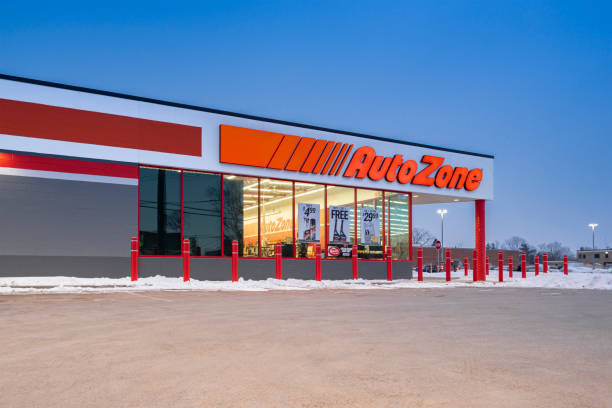Are Seat Covers Safe for Car Seats?
Seat covers have become a sought-after addition for car enthusiasts, offering both safeguarding and a touch of elegance to the interior of their vehicles. Nevertheless, parents often ponder over the safety implications of using seat covers on their child's car seats. With the well-being of their little ones taking precedence, it's crucial to comprehend the possible advantages and drawbacks of employing seat covers on car seats. In this piece, we'll delve into the discussion surrounding the safety of using seat covers for car seats.
Who Are Seat Covers Safe for Car Seats?

Seat covers are designed to fit over the existing upholstery of a car seat, providing an extra layer of protection against spills, stains, and wear and tear. They come in various materials such as fabric, leather, and neoprene, and can be customized to fit specific car models. While seat covers are generally considered safe for car seats, there are certain factors to consider before using them.
Material and Fit
The material and the fit of a seat cover play a crucial role in ensuring the safety of car seats. It's highly important to consider how well a seat cover fits and the type of material it's made from. Some materials may be too thick or slippery, potentially causing the car seat to shift or not remain securely in place. Therefore, it's essential to choose a seat cover explicitly designed for car seats and has undergone rigorous safety testing.
Moreover, the seat cover should snugly and securely fit the car seat without any loose or excess fabric that could impede the correct installation of the car seat. This ensures that the car seat functions as intended and provides the necessary protection for passengers, especially young children.
Compatibility with Car Seat Features
It's really important to think about how well the seat cover aligns with the unique features of the car seat. A lot of car seats have built-in functions like side impact protection, adjustable headrests, and harness systems. If the seat cover disrupts any of these features, it might actually put the safety and performance of the car seat at risk. It's crucial to thoroughly go through the instructions and warnings given by both the car seat and seat cover manufacturers to make sure they are a good match and can function together without any issues.
How to Are Seat Covers Safe for Car Seats?
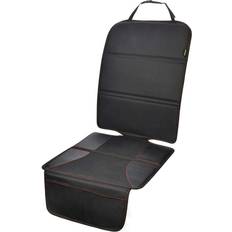
While seat covers can provide added protection and style to car seats, it is essential to follow proper installation and usage guidelines to ensure their safety. Here are some steps to take when using seat covers on car seats:
Read the Instructions
Before you go ahead and place a seat cover on your car seat, it's crucial to thoroughly review the instructions given by both the car seat and seat cover manufacturers. This step is essential as it will provide you with a comprehensive understanding of any possible compatibility concerns and will guarantee that the seat cover is fitted properly. By doing so, you'll ensure that your car seat receives the best protection while also adhering to safety standards. Taking the time to carefully follow these guidelines will help maintain the integrity and safety of your car seat, providing peace of mind for you and your passengers.
Proper Installation
It's incredibly important to prioritize your child's safety when they're in the car. Ensuring that the car seat and its cover are installed meticulously is crucial to guarantee their security. The cover should never interfere with the correct installation or functioning of the car seat, and it must not compromise the secure fastening of the harness straps. If you notice that the seat cover is causing any of these issues, it is absolutely vital that you refrain from using it. Your child's safety should always be the top priority when it comes to traveling in a vehicle.
Regular Maintenance
Ensuring your child's safety in the car is of utmost importance. It's crucial to prioritize the correct installation and use of both the car seat and its cover to guarantee your child's well-being. The car seat cover should never impede the proper installation or functioning of the car seat, nor should it compromise the secure fastening of the harness straps. If you observe that the seat cover is causing any of these issues, it is absolutely essential that you refrain from using it altogether. Your child's safety should always be the top priority when traveling in a vehicle.
Pros and Cons Are Seat Covers Safe for Car Seats?

Like any product, there are pros and cons to using seat covers on car seats. Let's take a look at some of the potential benefits and drawbacks.
Pros
-
Seat covers offer a multitude of advantages for car owners.
- Protection: Seat covers act as an additional layer of defense against spills, stains, and general wear and tear, aiding in the preservation of the car seat's quality over time.
- Customization: They are available in a wide range of materials, colors, and designs, enabling car owners to personalize their vehicle's interior to align with their preferences and style.
- Easy to Clean: Many seat covers are machine washable, simplifying the cleaning process and ensuring they can be easily maintained for long-term use.
Cons
- Compatibility Issues: As mentioned earlier, seat covers may not be compatible with certain car seat features, which could compromise the safety of the car seat.
- Additional Cost: Seat covers can be an added expense for ca
Downsides
- Compatibility Problems: As previously stated, seat covers might not work well with specific car seat features, potentially impacting the safety of the car seat.
- Extra Expenses: Seat covers can increase costs for car owners, particularly if they require frequent replacement due to wear and tear.
- Possible Airbag Interference: If the seat cover isn't designed to accommodate airbags, it could hinder their deployment during an accident.
- Potential Interference with Airbags: If the seat cover is not designed to accommodate airbags, it could interfere with their deployment in the event of an accident.
Alternatives
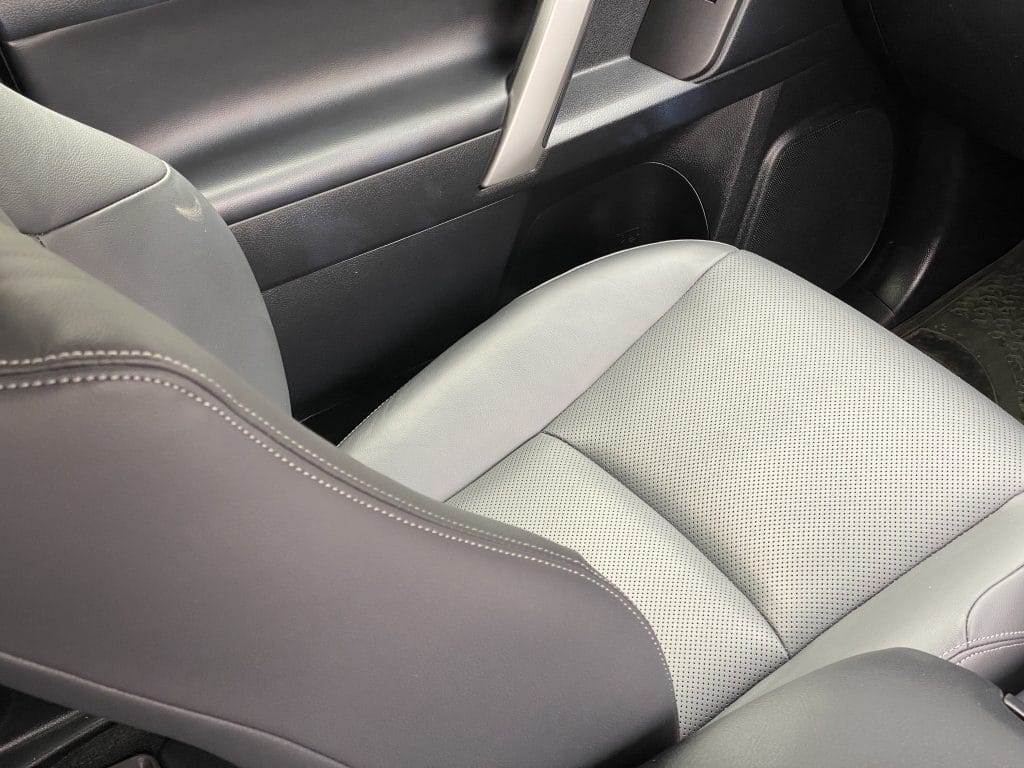
If you have concerns about the safety of using seat covers on your car seats, there are alternative options available for you to consider. One option is to use a protective mat or towel underneath the car seat. This can provide an additional layer of protection against spills and stains without needing to use traditional seat covers. Another alternative is to choose a car seat that comes with removable and machine-washable covers. This eliminates the need for extra seat covers altogether, offering convenience and ease of maintenance.
Step by Step to Do Are Seat Covers Safe for Car Seats?
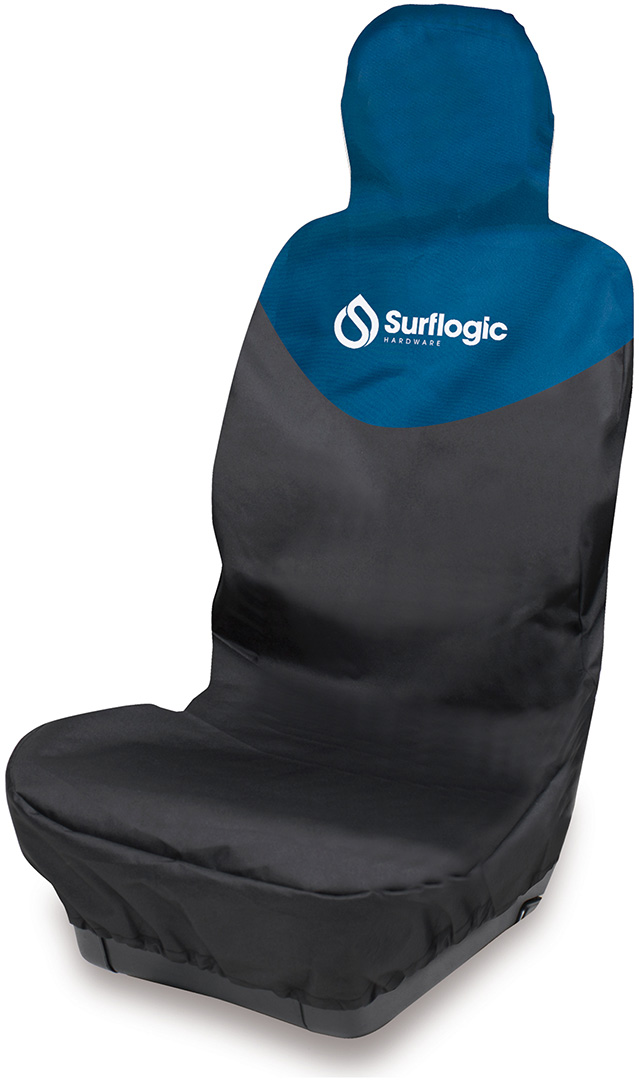
Here is a step-by-step guide on how to safely use seat covers on car seats:
- First, it's crucial to carefully review the instructions provided by both the car seat and seat cover manufacturers. This step ensures that you have a comprehensive understanding of how to proceed.
- Next, it's important to verify that the seat cover is fully compatible with your specific car seat and its unique features. Compatibility is key to ensuring safety and functionality.
- Following the manufacturer's guidelines, install the car seat securely in your vehicle. Proper installation is essential for the safety of your child.
- Once the car seat is correctly installed, place the seat cover over it, taking care to ensure that it does not interfere with the installation or any of the integral features of the car seat.
- After placing the seat cover, adjust the harness straps to guarantee a snug and secure fit for your child. Safety should always be the top priority.
- Lastly, it's important to regularly clean and maintain the seat cover as per the manufacturer's instructions. This upkeep helps to ensure its longevity and continued effectiveness.
Tips Are Seat Covers Safe for Car Seats?
Here are some additional tips to keep in mind when using seat covers on car seats:
- When selecting a seat cover for your car, it's important to choose one that is specifically designed for car seats and has undergone safety testing to ensure it meets the necessary standards.
- Avoid seat covers that are overly thick or slippery as they may interfere with the proper functioning of the car seat, potentially compromising safety.
- Make sure the seat cover you select is compatible with the specific features of your car seat to guarantee a proper fit and functionality.
- Regularly check the tightness of the harness straps to ensure they are not affected by the presence of the seat cover, maintaining optimal safety for your child.
- Strictly follow the manufacturer's guidelines for both installing and maintaining the seat cover to ensure it does not compromise the safety of the car seat.
These guidelines should help you make an informed decision when choosing a seat cover for your car.
FAQs
Are seat covers safe for infant car seats?
Seat covers can be safe for infant car seats as long as they are specifically designed for car seats and do not interfere with the proper installation or features of the car seat. It is important to carefully read the instructions and warnings provided by both the car seat and seat cover manufacturers before use.
Can I use any seat cover on my car seat?
No, it is essential to choose a seat cover that is specifically designed for car seats and has been tested for safety. Using an incompatible seat cover could compromise the safety of the car seat.
How often should I clean my seat cover?
It is recommended to clean your seat cover regularly, especially if there are spills or stains. Follow the manufacturer's instructions for cleaning and maintenance.
Can I use a seat cover with airbags?
If the seat cover is not designed to accommodate airbags, it could interfere with their deployment in the event of an accident. It is important to check the compatibility of the seat cover with your car's airbag system before use.
Are seat covers necessary for car seats?
Seat covers are not necessary for car seats, but they can provide added protection and style to the vehicle's interior. It is ultimately up to personal preference whether or not to use them.
Conclusion
In conclusion, seat covers can be safe for car seats as long as they are specifically designed for this purpose and do not interfere with the proper installation or features of the car seat. It is essential to carefully read the instructions and warnings provided by both the car seat and seat cover manufacturers and regularly maintain the seat cover to ensure its continued safety. If you have any doubts or concerns, it is always best to consult with a certified car seat technician for guidance.

